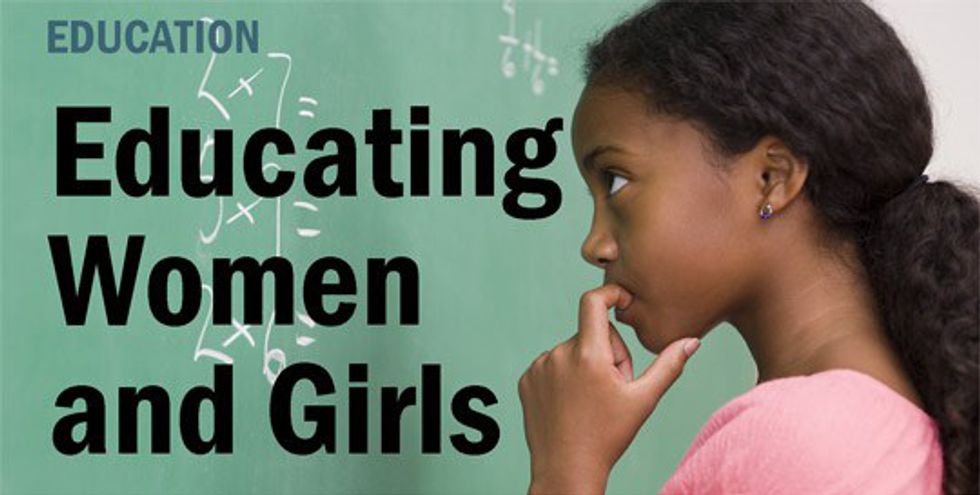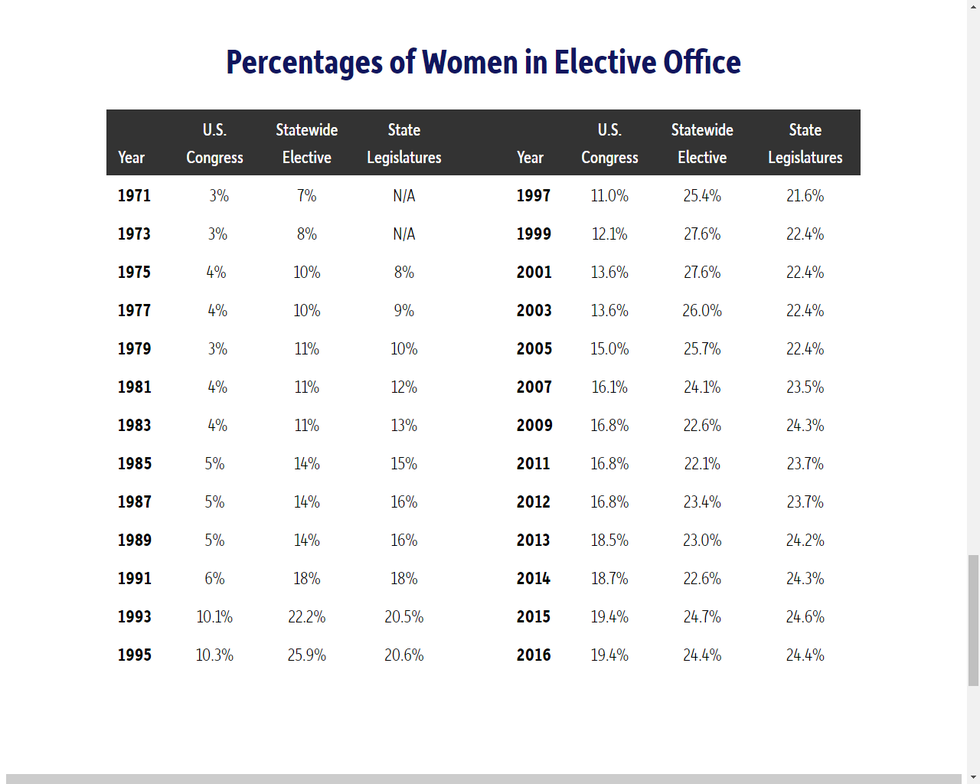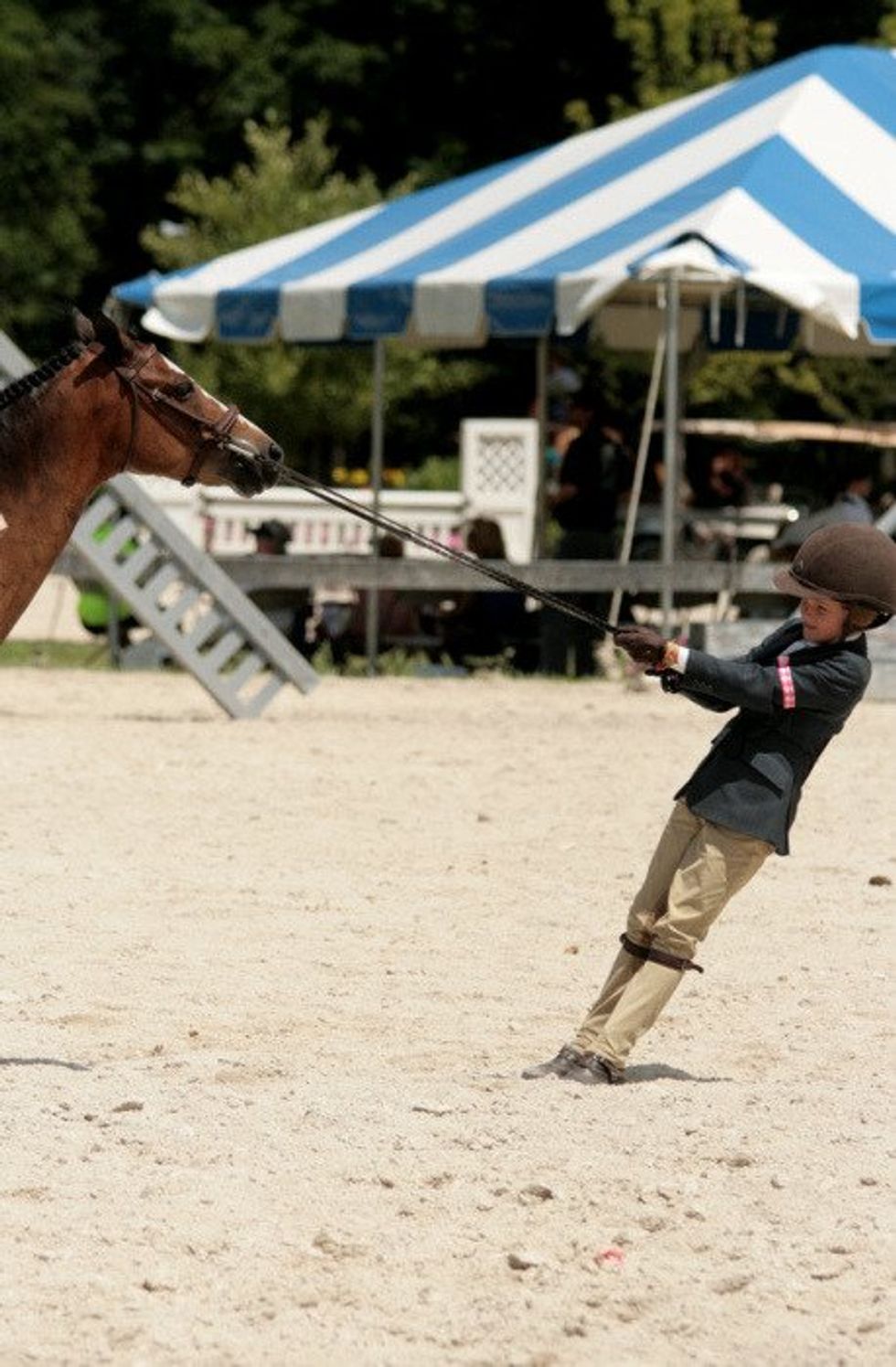This was a paper I wrote about the evolution of women in America. I thought this would be nice to share because it gives information and facts that many people may not know about. Additionally, I learned a lot from doing this research and putting this paper together. I hope you everyone enjoys this.
Since time began, women have played a crucial role in the world's development; from conceiving the world’s next generation to bringing awareness to gender inequality. Throughout history women have brought about change in both a political and social setting through advocating movements such as the feminist movement. Historically analyzing the role of women throughout history will give a complete understanding of how exactly a woman's voice can make change in America and around the world.
According to the Women’s International Center (WIC), “since early times women have been uniquely viewed as a creative source of human life. Historically, however, they have been considered not only intellectually inferior to men but also as a major source of temptation and evil.” This statement shows that since earlier in times women have been seen as objects and they cause major distractions for men which is seen as evil. Furthermore, WIC goes on by giving an example of this through Greek mythology where they tell the story of Pandora who opened a forbidden box and brought plague and unhappiness to mankind. This example shows that even through myths and storytelling women are seen in a negative light.
Furthermore, many movements for the justice and equality of women are mostly seen in the United States unlike other countries. The movements made by women are called feminist movements and throughout time in the United States there has been a total of three waves of the feminist movements. According to an article by Martha Rampton “Some thinkers have sought to locate the roots of feminism in ancient Greece with Sappho (d. c. 570 BCE), or the medieval world with Hildegard of Bingen (d. 1179) or Christine de Pisan (d. 1434). Certainly Olympes de Gouge (d. 1791), Mary Wollstonecraft (d. 1797) and Jane Austen (d. 1817) are foremothers of the modern women's movement.” Additionally, the article goes on to explain that all these women have advocated for women, but it “was not until the late nineteenth century that the efforts for women's equal rights coalesced into a clearly identifiable and self-conscious movement, or rather a series of movements.” Feminism to me is defined as the idea that women can run the world no matter their ethnicity, race, or religion.
The First Wave: Late 19th Century to Early 20th Century
The first-wave of feminism focused on women’s legal rights specifically their right to vote. During the time of the first wave the United State was becoming more of an urban industrialized and liberal society. The goal of this wave was to open opportunities to women and this wave formally began at the Seneca Falls Convention in 1848 where 300 men and women rallied for the equality of women. In result of this wave politics expanded to “issues concerning sexual, reproductive and economic matters. The seed was planted that women have the potential to contribute just as much if not more than men.” according to an article by Caroline Dorey-Stein.
The Second Wave: The 1960's to the 1980's
This wave comes after World War II and the civil rights movements of many minority groups. In this phase, the focus was on sexuality and reproductive rights, also rights within the workplace. Additionally, most of this movement's energy was focused on the passing of “the Equal Rights Amendment to the Constitution guaranteeing social equality regardless of sex.” according to Martha Rampton. Furthermore, the case of Roe vs. Wade was also at the forefront of this wave; which focused on the reproductive rights of women. This wave began with the of the 1968 and the 1969 protest of the Miss America pageant; where many women believed that the pageant degraded and reduced women to objects of beauty. This wave ended with the ruling of Roe vs. Wade, which allowed women to have reproductive rights under the 14th amendment.
The Third Wave: The mid-1990's to Present
The final wave of feminism focused on the sexual freedoms of women. The aspects of this wave was the re-adoption of “very lip-stick, high-heels, and cleavage proudly exposed by low cut necklines that the first two phases of the movement identified with male oppression.” This wave focuses on the idea that even if women dress a certain way, it shouldn’t define their intellectual abilities against men. The third wave is still present in the year 2016 because of the many women within the United States proving women can wear what they want and still be intelligent.
Each wave of feminism only covers a layer of the struggles women had to go through and analyzing the struggles by categories such as education, the workplace, and politics will allow us to go deeper into the evolution of women in history.
Women and Education
According to the National Women’s History Museum “women have largely been excluded from the educational system...women did not begin attending college in equal numbers to men until recently as 1980.” In an article titled The Education of Girls and Women in the United States: A Historical Perspective by Jennifer C. Madigan its states “At the close of the 18th century, most boys in colonial America attended “dame schools,”....Girls also attended dame schools, but only a small percentage...The primary focus of dame schools was to prepare boys for admission to the town schools, until the 19th century, girls were not allowed to attend.” This shows as early as colonial times girls were not getting as much of an education boys were. Additionally, “when girls were finally admitted to the town schools, they usually attended at different times of the day than the boys or on days when boys did not attend, such as summertime or holidays.”
Furthermore, according to the The National Women's History Museum “the 1800’s brought the most significant changes for women in education. Early in the century there was rapid growth in secondary education...The development of collegiate education for women followed and by mid century, women were being admitted to coeducational state colleges.” As time progressed women began to receive the same education as men and this allowed them to be on a higher pedestal.
The 19th century was just the start for the equal rights of women in America, but this wasn’t the case for all women, specifically African-American women. According to the National Women’s History Museum “The Colonial Period from 1607-1763, witnessed the establishment of the 13 American colonies...During this period, the transatlantic slave trade provided a labor force and commercial expansion for European nations...African American women became valued for their gender because they were both producer and reproducer; their ability to have children allowed the labor force to expand with less cash spent up-front.” This statement shows that during the colonial period African-American’s were seen as property and were only used for labor on the farm. The enslavement of African Americans didn’t officially end until December 18th, 1865.
Moving forward, in the beginning of the 20th century women “obtained 19 percent of all undergraduate college degrees...By 1984 the figure had sharply increased to 49 percent.” Additionally, the number of women in graduate studies also increased. “By the mid-1980's women were earning 49 percent of all master's degrees and about 33 percent of all doctoral degrees,” according to WIC. Lastly, 53 percent of all college students were women in 1985 and a quarter of these women were above 29.
According to an article published on TIME magazine by Nolan Feeney titled “Women Are Now More Likely to Have College Degree Than Men” states “for the first time since the Census Bureau began collecting data on higher education attainment, women are more likely to have a bachelor’s degree than men.” In 2014 “29.9% of men had a bachelor’s degree, while 30.2% of women did...” and “In the 25-34 age group, 37.5% of women have a bachelor’s degree or higher, while only 29.5% of men do.” The data presented shows that women have made progress in earning college degrees and have even surpassed men in earning a college degree.
Furthermore, according to the Women’s Bureau of the United States Department of Labor 35.6% of African American women have some college experience or an associate's degree in the year 2015 compared to 22.3% of Caucasian women. Additionally, in the data collected for 2015 only 30.4% of African American women earn a bachelor's degree and higher compared to 45.2% of Caucasian women. These statistics show that even though women are making progress in higher education; that doesn’t mean all women are.
Women in the Workplace
From colonial America up until the year 2016 women have fought for their rights in the workplace. The fight for rights in the workplace is still evident today; specifically the fight for equal wages. In colonial America women usually became seamstresses or kept boarding houses. However, there were some women who worked in professions that were mostly available to men. Furthermore, by the “early 19th century...acceptable occupations for working women were limited to factory labor or domestic work. Women were excluded from the professions, except for writing and teaching.”
As the 19th century continued, the educational preparation, specifically for the practice of medicine, increased. During this time home nursing was a female occupation and nursing in hospitals was done exclusively by men. In result of this discrimination of women in the medical field began to appear. An example of this is would be the founding of the American Medical Association in 1846, who barred women from membership. Furthermore, women would eventually enroll in their own medical schools because they were barred from attending men's medical schools. One of these medical schools included the Female Medical College of Pennsylvania, which was established in 1850. By the 1910's, however, “women were attending many leading medical schools, and in 1915 the American Medical Association began to admit women members.” according to WIC.
The most important time for women's equal rights in the workforce was in the year 1964. In the year 1964, the Civil Rights Act was passed and it “outlawed discrimination based on race, color, religion, sex, or national origin. It also officially ended racial segregation in schools and public facilities.” Furthermore, it led to the creation of new and powerful legislation by the name of Equal Employment Opportunity Commission (EEOC). By 1970 the EEOC opened the doors for many women to jobs that were closed to them. Additionally, the EEOC introduced the Pregnancy Discrimination Act in 1978 , which banned the discrimination against pregnant women.
By the 1980s women made up 17 percent of doctors in the United States; however women didn't show an improvement in other professions. Some of these professions include lawyers and judges, which in 1989 about 22 percent were women. Additionally, in 1989 only 7.5 percent of women were engineers. Unlike these professions, teaching was a large field of employment for women. In the late “1980s more than twice as many women as men taught in elementary and high schools. In higher education, however, women held only about one third of the teaching positions...” The areas of concentrations women taught mostly were education, social science, home economics, nursing, and library science. Lastly, a small portion of women college and university teachers taught physical sciences, engineering, agriculture, and law.
In an article published by The Huffington Post titled Women in the Workforce: What Changes Have We Made? it states “women’s presence in the labor force has increased dramatically, from 30.3 million in 1970 to 72.7 million during 2006-2010...we find that women made up 37.97 percent of the labor force in 1970 compared to 47.21 percent between 2006 and 2010.” This data taken from the The Census Bureau shows that women have made dramatic progress within the workforce over that 40 year period. The article goes on to state “there are aspects of the workforce where growth has slowed. The Bureau reports that the gain in women’s participation in the workforce happened between 1970 and 1980 and has since slowed down, averaging an increase of only 0.4 percentage points between 2000 and 2006-2010. That’s compared to a growth rate of 4.3 percentage points at its peak in the 1970's” This statistic proves that women's dramatic growth in the workforce takes years and it isn’t growing at a constant rate.
Furthermore, women today still continue to be overwhelmingly employed in certain occupations. “Women make up 96.3 percent of dental assistance...95.9 percent of secretaries; and 91.2 percent of registered nurses....The leading occupations for women in 1970 were secretaries, bookkeepers, and elementary school teachers. In 2006-2010, the leading occupations were secretaries and administrative assistants, cashiers, and elementary and middle school teachers.”
Moving forward, the fight for equal wages for women has been going on for many years. Fifty three years ago, President John F. Kennedy “signed landmark legislation to guarantee equal pay for women and men performing equal work for the same employer.” Additionally, “The Equal Pay Act of 1963 was the first in a series of major federal and state laws that had a profound effect on job opportunities and earnings for women over the next half century,and laid the foundation for the movement of women into the paid labor force at unprecedented levels.” Since the passing of The Equal Pay Act several generations of women have transformed the workplace and in result the economy transformed. Starting in 2011 this progress is notwithstanding and in 2011 women earned “only 77 cents for every dollar earned by men.” At this time women also continued to comprise a majority of employees in many low-wage sectors. According to the Women’s Bureau of the U.S Department of Labor “On average, women make 78 cents for every dollar that a man earns” in the year 2016. Furthermore, the one key factor that contributes to this wage gap is: gender differences across occupations. In result women’s share of employment varies considerably across occupational groups. Based on the facts stated above the wage gap in the United States needs to be improved and the way it will be possible is that we as Americans need to continue pushing the legislation for change.
Women and Politics
Around the world politics has become more diverse in both opinion and the people that are elected. However, political change has taken years to overcome. Women in the United States had the right to vote in 1920, but they had little political roles. One of the first major political statements made by women was electing Jeanette Rankin of Montana in 1917, “the first women member of the United States House of Representatives.” (Women’s History in America. WIC. Women in Politics) Additionally, in 1968 Shirley Chisholm of New York became the first black woman elected to the House of Representatives. Lastly, Hattie Caraway of Arkansas both in 1932 and 1933, was the first women elected to the United States Senate (Women’s History in America. WIC. Women in Politics). Just these examples show the progress women have made in an political setting throughout history. The figure below shows the change in percentage overtime for women in political offices starting with the U.S Congress to State Legislatures.
In an current fact sheet by the Center for American Women and Politics (CAWP) shows the current numbers of women officeholders serving in 2016. According to the fact sheet “in 2016, 104 women serve in the U.S. Congress. Twenty women serve in the Senate and 84 women in the House. The number of women in statewide elective executive posts is 76, and the proportion of women in state legislatures is 24.4 percent.” Additionally, “Of the 104 women serving in the 114th US Congress... 31.7%, are women of color, 1 in the Senate and 32 in the House; in addition, a Black woman, an Asian Pacific Islander, and a Caribbean American woman serve as Delegates to the House from Washington, DC, American Samoa, and the Virgin Islands…” Furthermore, "of the 76 women serving in statewide elective executive offices...11.8%, are women of color.” The data presented shows that women have progressed in the political setting throughout time and that a positive prediction can be made about the increase of women in politics for the future.
Conclusions
The role of a women within American society has made major progress over the last 100 years. From impacting the world of education to holding political positions within the United States government. In the year 2016, women have made major progress specifically in the political realm with Hillary Clinton being the first female presidential nominee for the Democratic Party. This alone shows that women are more powerful than many people think and can achieve just as many things as men. Furthermore, there is work that still needs to be done for women in the United States; specifically the wage gap and the increase of higher education for African American women. The education rate for African American women is fairly low compared to that of their Caucasian female counterparts. This issue can be fixed with the help of legislation and everyday American citizens by pushing for more college preparation programs in African American communities. These issues are just a layer of other issues that women in the United States are going through.
The reason this topic was chosen is because it provides historical analysis of multiple issues and topics. Additionally, this topic provides additional knowledge of what it is like to be a woman growing up in American society. A society where women aren’t equal to men and are seen as incapable of doing certain occupations. Change needs to start happening and the only way that is possible is if American women of all races, ethnicities, and religions stand together and fight for what is right.

























 teenhorseforum
teenhorseforum














